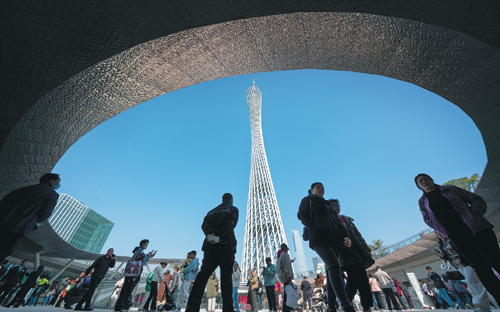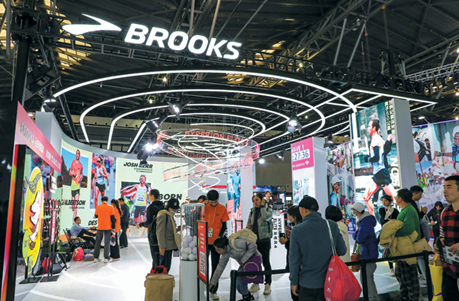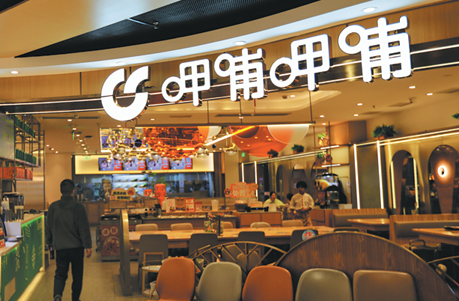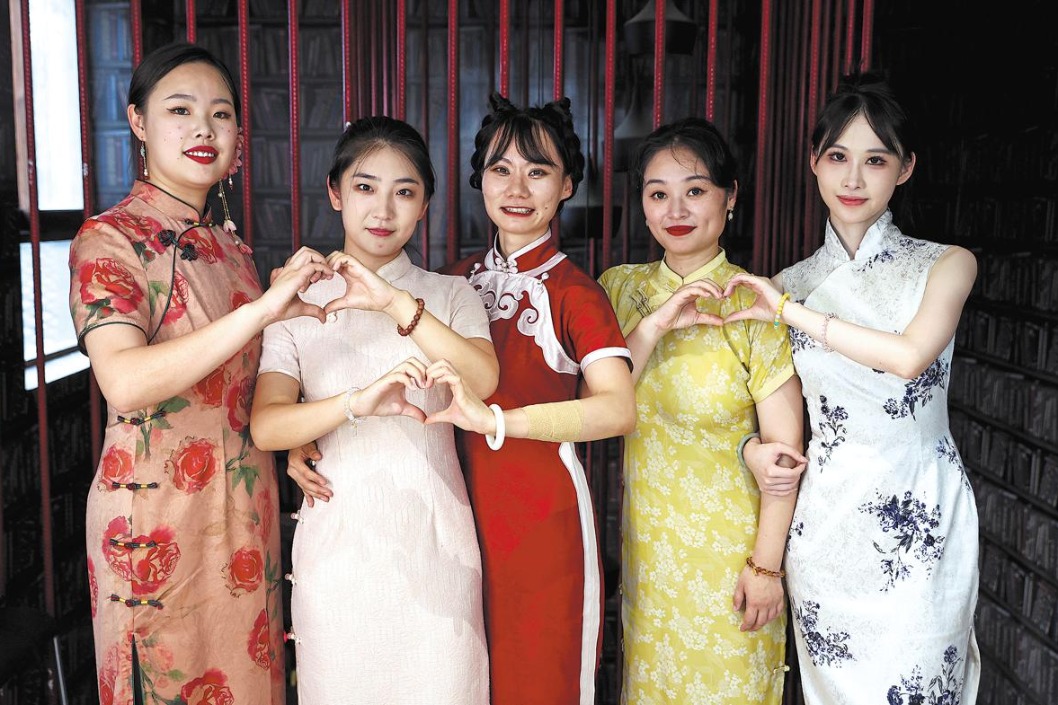First-store economy going full throttle
Debut outlets have become significant channels for generating substantial foot traffic, empowering commercial complexes

As new brands become key in driving traffic to China's urban commercial spaces, the sustained rise of the "first-store economy" has further stimulated consumer appetite.
First-store economy refers to a model in which various regions leverage their unique resources to attract domestic and international brands to open their first stores there.
It is seen as a major element in the debut economy, a consumption model where brands unveil new products or services to attract consumers and drive purchasing behavior.
By clustering these stores through favorable policies and services, this economic model aims to foster business innovation, promote consumption upgrades and push local economic growth.
Currently, first stores have become one of the most significant channels for generating substantial foot traffic and empowering commercial complexes.
For instance, when Beijing's Haidian Joy City opened its doors in December, nearly 30 percent of its stores were debut locations. On its opening day, the mall attracted over 216,000 visitors, with sales reaching about 17.8 million yuan ($2.43 million).
"I find the concept of first stores quite special as they offer a completely new shopping experience. I am curious to see what's inside, and this curiosity pushes me to visit and check it out," said a consumer surnamed Yang.
According to data from Beijing's bureau of commerce, about 900 first stores opened in the city in 2024, including both international as well as local brands.
As a major enabler of urban commercial development, the emerging business model not only attracts high-quality projects such as first stores, flagship stores and concept stores, but also stimulates the emergence of new products, services and business models, thereby energizing urban consumer activity and boosting industrial upgrades and economic growth, said Lai Yang, executive vice-president of the Beijing Commerce Economy Association.
As more cities ramp up focus on this new economy, first stores are gradually expanding beyond the traditional first-tier metros like Beijing, Shanghai, Guangzhou, and Shenzhen, to second- and third-tier ones.
For instance, on Jan 1, multinational restaurant chain Domino's Pizza unveiled its first store in Shijiazhuang, Hebei province, witnessing long queues on the opening day.
"In recent years, I've noticed an increasing number of international brands setting up stores in Shijiazhuang. Now, I no longer need to travel to other cities for those brands — I can find everything right here," said a local customer surnamed Wang.
According to data from the city's commerce bureau, over 200 well-known brands have opened their first stores and flagship locations in Shijiazhuang during the past three years. The first stores are primarily located in core commercial districts and shopping complexes, with a focus on food and retail sectors, said Ma Yongning, an official with Shijiazhuang's bureau of commerce.
Similarly, hot pot chain Xiabu Xiabu also opened nine new stores in cities such as Beijing, Shanghai, Hangzhou, and Qingdao during the New Year's Day holiday.
The company, which introduced new products like the "drunken chicken pot" to provide consumers with greater novelty, said it will continue to innovate and improve services during the "golden month" of January and leverage new stores for stronger growth momentum.
However, first stores are rapidly attracting large crowds not only due to the novelty factor of new brands, but also because of the extensive promotions and activities associated with these store openings, said Zhuang Shuai, a visiting consultant at China Chain Store & Franchise Association.
Zhuang added that once the novelty of first stores begins to wear off and the promotional offers end, maintaining consumer interest becomes a challenge.
"After the initial excitement, stores must continue to innovate, ensure a high-quality in-store experience, and regularly promote new products and events to retain customers," Zhuang said. "If the influence of a first store wanes, it will naturally fade from the market."
The flourishing first-store economy has also attracted more international brands to accelerate their entry into the Chinese market.
In the past year alone, companies such as US running shoe brand Brooks, Spanish children's clothing label Bobo Choses, Japanese eyewear entity Hakusan Megane, South Korean fashion house Raive and Canadian cycling gear maker 7mesh have all opened their first stores in China, further demonstrating the immense potential of the domestic consumer market.
"We have conducted extensive consumer research in China, including studies specifically focusing on local runners, which allowed us to better understand how to enter the Chinese market," said Justin Dempsey-Chiam, general manager of Brooks' Asia-Pacific and Latin America markets, in a previous interview.
As a result, Brooks chose Shanghai's Pudong New Area for its first store, located in a commercial complex near a park, to better engage with the Chinese running community and facilitate interaction between runners and running gear, the executive said.
To further tap this new economy, fostering the first-store economy was highlighted as a key priority at the annual Central Economic Work Conference in December, followed by retail industry innovation and upgrade of an implementation plan issued by the Ministry of Commerce along with six other departments, which explicitly calls for the promotion of the first-store economy and outlines strategies for first stores, first exhibitions, and new product launches.
With strong policy backing, the first-store economy is expected to bolster brand value along with regional development, promote multi-industry integration, and create new economic growth points for cities, said Zeng Fu'e, a professor at Wuhan University's economics and management school.
Following the central guideline, local governments have also introduced pragmatic measures to support the first-store economy.
To date, Beijing has streamlined services related to location selection, registration, and trademark protection for new stores. Shanghai has introduced a one-time incentive of 1 million yuan for first stores of Asian-level or higher. Chengdu in Sichuan province plans to attract 130 high-level first stores by 2025 and host more than 100 events related to first shows and exhibitions.
In order to further develop the first-store economy, there is a need to foster a diverse range of entities engaging in this model, said Chen Lifen, a researcher at the Development Research Center of the State Council.
Large enterprises should increase investments in research and development, while the growth of small and medium-sized enterprises should be supported, Chen said.
Expanding market opportunities, strengthening intellectual property protection, and encouraging innovation in business models and product development are also crucial for enabling a more vibrant first-store economy, Chen added.



Today's Top News
- US legislative chaos undermines its democracy
- Why China is irreplaceable in supply chain
- China's FDI inflow tops $700b since 2021
- Australia, China set to bolster steel partnership
- South China Sea ruling slammed as illegal, invalid
- US' secondary sanctions no use in ending crisis






























